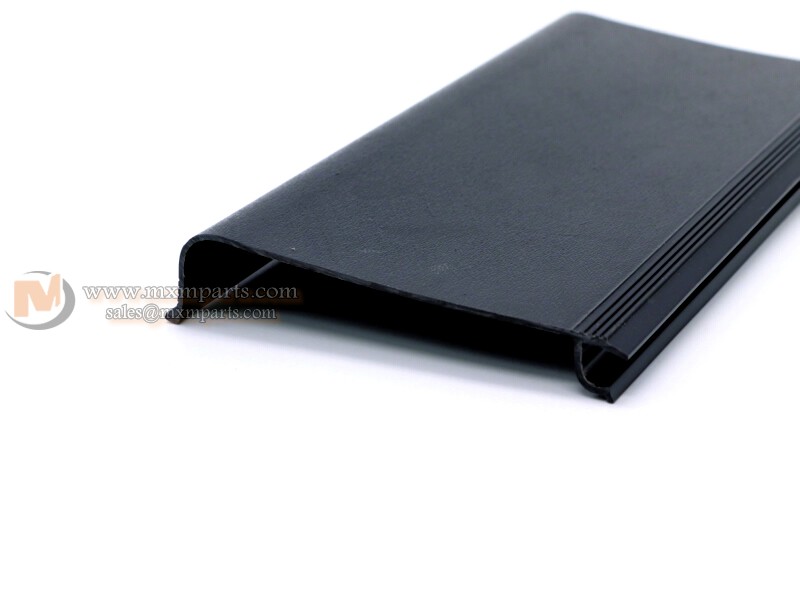Understanding the Essentials and Applications of Plastic Extrusion in Modern Manufacturing
In the world of modern production, the strategy of plastic extrusion plays a crucial duty - plastic extrusion. This elaborate process, including the melting and shaping of plastic through specialized passes away, is leveraged across different sectors for the production of diverse items. From automobile parts to durable goods product packaging, the applications are large, and the capacity for sustainability is similarly impressive. Unraveling the principles of this process exposes the real convenience and potential of plastic extrusion.
The Principles of Plastic Extrusion Refine
While it might appear complex, the fundamentals of the plastic extrusion process are based upon reasonably simple principles. It is a production process where plastic is thawed and afterwards formed into a constant profile via a die. The raw plastic material, typically in the kind of pellets, is fed into an extruder. Inside the extruder, the plastic is subjected to warm and stress, causing it to thaw. The molten plastic is then forced via a designed opening, called a die, to develop a long, continuous item. The extruded item is cooled down and after that cut to the preferred length. The plastic extrusion process is thoroughly utilized in different markets due to its performance, cost-effectiveness, and versatility.
Different Kinds Of Plastic Extrusion Strategies
Structure upon the fundamental understanding of the plastic extrusion procedure, it is required to explore the various strategies entailed in this manufacturing technique. In contrast, sheet extrusion produces large, level sheets of plastic, which are commonly more refined right into products such as food packaging, shower drapes, and auto parts. Recognizing these techniques is crucial to making use of plastic extrusion efficiently in modern production.

The Function of Plastic Extrusion in the Automotive Industry
A frustrating bulk of parts in contemporary lorries are items of the plastic extrusion process. This process has changed the auto market, changing it right into an extra reliable, cost-effective, and versatile manufacturing field. Plastic extrusion is primarily used in the manufacturing of numerous car elements such as bumpers, grills, door panels, and dashboard trim. The process provides an attire, constant result, allowing producers to produce high-volume get rid of excellent accuracy and very little waste. The agility of the extruded plastic parts adds to the overall reduction in automobile weight, improving fuel effectiveness. The toughness and resistance of these components to heat, cold, and effect enhance the durability of autos. click here for more Therefore, plastic extrusion plays a pivotal function in automobile manufacturing.

Applications of Plastic Extrusion in Consumer Goods Manufacturing
Past its significant influence on the automobile market, plastic extrusion confirms similarly effective in the realm of customer products manufacturing. This process is important in producing a wide array of items, from food product packaging to household appliances, toys, and even clinical tools. The flexibility of plastic extrusion permits manufacturers to develop and produce intricate sizes and shapes with high accuracy and efficiency. Due to the recyclability of lots of plastics, extruded elements can be reprocessed, minimizing waste and cost (plastic extrusion). The versatility, flexibility, and cost-effectiveness of plastic extrusion make it a favored option for lots of durable goods producers, adding dramatically to the sector's growth and advancement. The ecological implications of this widespread usage call for cautious factor Extra resources to consider, a topic to be reviewed additionally in the subsequent section.
Ecological Impact and Sustainability in Plastic Extrusion
The pervasive use of plastic extrusion in making invites examination of its eco-friendly effects. As a procedure that regularly uses non-biodegradable products, the environmental effect can be considerable. Power usage, waste production, and carbon discharges are all worries. Nevertheless, market innovations are increasing sustainability. Effective machinery reduces energy use, while waste monitoring systems reuse scrap plastic, lowering resources demands. Additionally, the development of naturally degradable plastics offers a much more ecologically friendly option. Despite these renovations, even more development is needed to alleviate the ecological footprint of plastic extrusion. As culture leans towards sustainability, suppliers need to adjust to remain sensible, highlighting the importance of continual research study and innovation in this area.
Conclusion
In final thought, plastic extrusion plays a vital role in contemporary production, particularly in the automotive and consumer her response items sectors. Recognizing the basics of this process is vital to maximizing its applications and benefits.

The plastic extrusion procedure is extensively made use of in numerous markets due to its effectiveness, convenience, and cost-effectiveness.
Building upon the basic understanding of the plastic extrusion procedure, it is required to discover the numerous strategies included in this production approach. plastic extrusion. In comparison, sheet extrusion develops huge, level sheets of plastic, which are usually further processed into items such as food product packaging, shower drapes, and car components.An overwhelming majority of parts in modern lorries are products of the plastic extrusion procedure